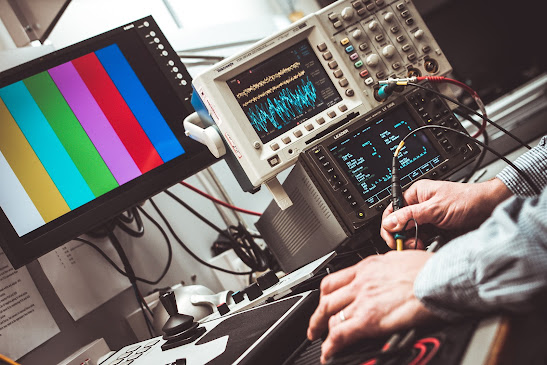Unlock a New You: A Guide to Low Impact Anti-Aging Exercises for Women
Unlock a New You: A Guide to Low Impact Anti-Aging Exercises for Women
Aging is a natural part of life, but many women are interested in ways to slow down the aging process and maintain their overall health and wellness. One of the most effective ways to do this is through regular exercise, which has been shown to improve physical and mental health, boost energy levels, and even improve skin quality.
However, high-impact exercises such as running or high-intensity interval training can be too stressful on the joints and muscles, especially for women who may be more prone to injuries or joint strain. This is where low-impact exercise comes in - it provides the benefits of exercise without the added stress on the body.
This guide is designed to provide an overview of low-impact anti-aging exercises for women, including exercises for the upper and lower body as well as the core and back. Additionally, it will offer tips on creating a routine and staying motivated, as well as other anti-aging tips such as nutrition and skincare. With this guide, you can unlock a new you and feel your best at any age.
Benefits of Low Impact Exercise
Explanation of low-impact exercise Comparison of low-impact vs high-impact exercise Benefits of low-impact exercise, including reduced risk of injury and joint strainLow-impact exercise refers to activities that put less stress on the joints and bones, while still providing a good cardiovascular workout. Examples of low-impact exercise include walking, cycling, swimming, and low-impact aerobics.
In comparison to high-impact exercise, low-impact exercise is much gentler on the body. High-impact exercise, such as running or plyometrics, involves jumping or pounding movements that can put a lot of stress on the joints and muscles, increasing the risk of injury or joint strain.
One of the main benefits of low-impact exercise is that it reduces the risk of injury and joint strain. It can be particularly beneficial for women, who are more prone to joint problems than men. Additionally, low-impact exercise can be easier on the body for those who are just starting an exercise routine or are recovering from an injury.
In addition to reducing the risk of injury, low-impact exercise has other benefits as well. It can improve cardiovascular health, build strength and endurance, and increase flexibility and balance. Furthermore, regular low-impact exercise has been linked to improved mental health, reduced stress levels, and improved sleep quality.
Overall, incorporating low-impact exercise into your routine can provide a multitude of benefits for your physical and mental health.
Anti-Aging Exercises
Overview of exercises targeting different parts of the body Exercises for the upper body, including arms and shoulders Exercises for the lower body, including hips and legs Exercises for the core and backAnti-aging exercises can help maintain muscle mass, bone density, and overall strength, which can all contribute to a more youthful appearance and healthy body. Here is an overview of exercises targeting different parts of the body:
- Upper Body Exercises:
- Bicep Curls: Stand with feet shoulder-width apart, and hold dumbbells at your sides. Slowly lift the weights to your shoulders, keeping your elbows close to your body. Lower the weights back down to your sides and repeat.
- Shoulder Press: Hold dumbbells at shoulder height with palms facing forward. Slowly lift the weights above your head, then lower them back down to your shoulders.
- Tricep Dips: Sit on the edge of a chair or bench with your hands on the edge, fingers facing forward. Lower your body towards the ground by bending your elbows, then push back up to the starting position.
- Lower Body Exercises:
- Squats: Stand with feet shoulder-width apart and toes pointed slightly outward. Lower your body down as if sitting in a chair, then push back up to the starting position.
- Lunges: Step forward with one leg, bending both knees to lower your body down. Push back up and repeat on the other leg.
- Calf Raises: Stand with feet shoulder-width apart and rise up onto your toes, then lower back down.
- Core and Back Exercises:
- Plank: Start in a push-up position, then lower your body down so that your forearms are on the ground. Hold this position for 30 seconds to one minute.
- Bridge: Lie on your back with knees bent and feet flat on the ground. Lift your hips up towards the ceiling, squeezing your glutes, and hold for a few seconds before lowering back down.
- Superman: Lie on your stomach with arms and legs extended. Lift your arms, chest, and legs up off the ground at the same time, then lower back down.
It is important to consult with a healthcare provider before starting any exercise program, especially if you have any health concerns or conditions. Additionally, it is essential to use proper form and technique to prevent injury and get the most out of each exercise.
Creating a Routine
Creating an exercise routine can help make anti-aging exercises a regular part of your lifestyle, ensuring that you are consistently reaping the benefits of exercise. Here are some tips for creating a routine:
Set Achievable Goals: Start by setting specific, achievable goals that are realistic for your current fitness level. For example, if you are just starting, your goal might be to exercise for 20-30 minutes a day, three times a week. As you progress, you can adjust your goals and increase the frequency or duration of your workouts.
Find Exercises You Enjoy: Choose exercises that you enjoy and that are suitable for your fitness level. This will help make exercise feel less like a chore and more like a fun activity. Variety can also help keep things interesting, so consider trying out different exercises to find what you enjoy most.
Schedule Your Workouts: Plan your workouts in advance and schedule them into your calendar. Treat your exercise routine like any other appointment and stick to it as much as possible. Consistency is key for building a habit.
Track Your Progress: Keep track of your progress by logging your workouts and monitoring your performance. You can use a fitness app, a workout journal, or even a simple spreadsheet to track your progress. This can help you see how far you've come and provide motivation to keep going.
Celebrate Your Achievements: Finally, celebrate your achievements along the way. Whether it's reaching a specific milestone or completing a particularly challenging workout, take the time to acknowledge and celebrate your hard work and dedication.
Remember that creating a routine takes time and effort, and setbacks are normal. It's important to be patient with yourself and make adjustments as needed to stay motivated and on track. By staying committed to your exercise routine, you can unlock a new you and feel your best at any age.
Other Anti-Aging Tips
Sure, here are some additional anti-aging tips:
Eat a healthy diet: A diet rich in antioxidants, vitamins, and minerals can help keep your skin looking youthful. Include plenty of fruits, vegetables, whole grains, lean proteins, and healthy fats in your diet.
Stay hydrated: Drinking plenty of water is important for keeping your skin hydrated and plump. Aim for at least 8 glasses of water per day.
Exercise regularly: Regular exercise can help keep your body and mind healthy. It can also help maintain muscle mass, which tends to decrease with age.
Get enough sleep: Adequate sleep is essential for cell repair and regeneration. Aim for 7-8 hours of sleep per night.
Protect your skin from the sun: UV rays can cause skin damage and accelerate aging. Protect your skin by wearing sunscreen, hats, and protective clothing, and avoiding direct sunlight during peak hours.
Use a skincare routine: Using a daily skincare routine can help keep your skin looking youthful. This may include cleansing, toning, moisturizing, and using anti-aging products that contain ingredients like retinol or hyaluronic acid.
Manage stress: Chronic stress can cause inflammation, which can contribute to aging. Find ways to manage stress, such as through exercise, meditation, or therapy.
To stay motivated and maintain a healthy lifestyle, consider the following tips:
Set achievable goals: Set realistic goals that you can accomplish within a specific timeframe. This can help you stay motivated and track your progress.
Find a workout partner: Exercising with a friend or family member can help keep you accountable and make working out more fun.
Reward yourself: Set up a system where you reward yourself for reaching milestones. This can help keep you motivated and on track.
Keep things interesting: Switch up your exercise routine or try new healthy recipes to keep things interesting and prevent boredom.
Prioritize self-care: Taking time for yourself, whether it's through a relaxing bath or a favorite hobby, can help you recharge and maintain a healthy lifestyle.
Stay positive: Focus on the progress you've made, rather than any setbacks or challenges. Staying positive can help you maintain motivation and continue working towards your goals.
Conclusion
In conclusion, low-impact exercise can be a powerful tool in the fight against aging. It can help improve cardiovascular health, strengthen muscles and bones, increase flexibility and balance, and reduce the risk of chronic diseases. By incorporating low-impact exercise into your daily routine, you can enjoy the many benefits that come with a healthy and active lifestyle.
If you are considering starting a low-impact exercise routine, it's important to start slowly and gradually increase the intensity and duration of your workouts. It's also important to choose activities that you enjoy and that fit your personal fitness level and physical abilities.
Remember, the key to long-term health and wellness is consistency and commitment. By making positive changes to your lifestyle and incorporating low-impact exercise into your routine, you can feel and look younger, stronger, and more vibrant for years to come. So why not take the first step today and start your journey to a healthier and happier you?







Comments
Post a Comment